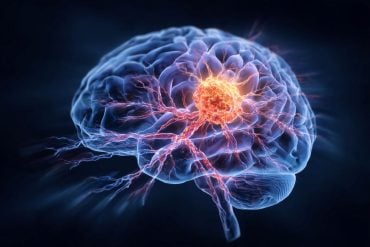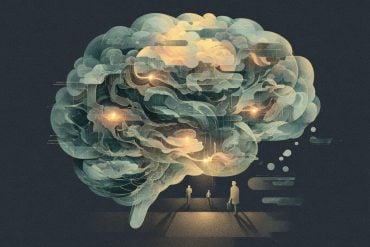Summary: A new experimental drug, SBI-810, may deliver potent pain relief without the addictive and harmful side effects of opioids. Unlike opioids, SBI-810 precisely targets a single brain receptor pathway linked to pain reduction, avoiding the euphoric “high” and dangerous complications.
In mice, the drug effectively relieved pain from surgery, fractures, and nerve injury, and even enhanced opioid effects at lower doses without causing tolerance. It also outperformed current medications like gabapentin without inducing sedation or memory problems. SBI-810 works by activating neurotensin receptor 1 using a technique called biased agonism, offering pain relief through a safer signaling route.
Key Facts:
- Precision Targeting: SBI-810 activates a single pain-relief pathway (β-arrestin-2) without affecting addictive opioid-related pathways.
- No Tolerance or Sedation: Mice treated with SBI-810 didn’t develop tolerance or experience common side effects like sedation or memory loss.
- Enhanced Effectiveness: SBI-810 reduced pain from various sources and boosted opioid effects at lower, safer doses.
Source: Duke University
An experimental drug developed at Duke University School of Medicine could offer powerful pain relief without the dangerous side effects of opioids.
The drug, called SBI-810, is part of a new generation of compounds designed to target a receptor on the nerves and spinal cord. While opioids flood multiple cellular pathways indiscriminately, SBI-810, a non-opioid treatment, takes a more focused approach, activating only a specific pain-relief pathway that avoids the euphoric “high” linked to addiction.

In tests in mice, SBI-810 worked well on its own and, when used in combination, made opioids more effective at lower doses, according to the study published May 19 in Cell.
“What makes this compound exciting is that it is both analgesic and non-opioid,” said senior study author Ru-Rong Ji, PhD, an anesthesiology and neurobiology researcher who directs the Duke Anesthesiology Center for Translational Pain Medicine.
Even more encouraging: it prevented common side effects like constipation and buildup of tolerance, which often forces patients to need stronger and more frequent doses of opioids over time.
SBI-810 is in early development, but Duke researchers are aiming for human trials soon and they’ve locked in multiple patents for the discovery.
There’s an urgent need for pain relief alternatives. Drug overdose deaths are declining, but more than 80,000 Americans still die each year most often from opioids. Meanwhile, chronic pain affects one-third of the U.S. population.
Researchers said the drug could be a safer option for treating both short-term and chronic pain for those recovering from surgery or living with diabetic nerve pain.
SBI-810 is designed to target the brain receptor neurotensin receptor 1. Using a method known as biased agonism, it switches on a specific signal—β-arrestin-2—linked to pain relief, while avoiding other signals that can cause side effects or addiction.
“The receptor is expressed on sensory neurons and the brain and spinal cord,” Ji said. “It’s a promising target for treating acute and chronic pain.”
SBI-810 effectively relieved pain from surgical incisions, bone fractures, and nerve injuries better than some existing painkillers. When injected in mice, it reduced signs of spontaneous discomfort, such as guarding and facial grimacing.
Duke scientists compared SBI-810 to oliceridine, a newer type of opioid used in hospitals, and found SBI-810 worked better in some situations, with fewer signs of distress.
Unlike opioids like morphine, SBI-810 didn’t cause tolerance after repeated use. It also outperformed gabapentin, a common drug for nerve pain, and didn’t cause sedation or memory problems, which are often seen with gabapentin.
Researchers said the compound’s dual action—on both the peripheral and central nervous systems— could offer a new kind of balance in pain medicine: powerful enough to work, yet specific enough to avoid harm.
Funding: The study was supported by the NIH and the Department of Defense.
Additional Duke authors include first authors Ran Guo and Ouyang Chen; Sangsu Bang, Sharat Chandra, Yize Li, Gang Chen, Rou-Gang Xie, Wei He, Jing Xu, Richard Zhou, Shaoyong Song, Ivan Spasojevic, Marc G. Caron, William C. Wetsel and Lawrence S. Barak.
About this neuropharmacology research news
Author: Shantell Kirkendoll
Source: Duke University
Contact: Shantell Kirkendoll – Duke University
Image: The image is credited to Neuroscience News
Original Research: Open access.
“Arrestin-biased allosteric modulator of neurotensin receptor 1 alleviates acute and chronic pain” by Ru-Rong Ji et al. Cell
Abstract
Arrestin-biased allosteric modulator of neurotensin receptor 1 alleviates acute and chronic pain
G-protein-biased agonists have been shown to enhance opioid analgesia by circumventing β-arrestin-2 (βarr2) signaling.
We previously reported that SBI-553, a neurotensin receptor 1 (NTSR1)-positive allosteric modulator biased toward βarr2 signaling, attenuates psychostimulant effects in mice.
Here, we demonstrate that its analog, SBI-810, exhibits potent antinociceptive properties in rodent models of postoperative pain, inflammatory pain, and neuropathic pain via systemic and local administration. SBI-810’s analgesic effects require NTSR1 and βarr2 but not NTSR2 or βarr1.
Mechanistically, SBI-810 suppresses excitatory synaptic transmission, inhibits NMDA receptor and extracellular-regulated signal kinase (ERK) signaling in spinal cord nociceptive neurons, reduces Nav1.7 surface expression and action potential firing in primary sensory neurons, and dampens C-fiber responses.
Behaviorally, it reduces opioid-induced conditioned place preference, alleviates constipation, and mitigates chronic opioid withdrawal symptoms.
These findings highlight NTSR1-biased allosteric modulators as a promising, non-addictive therapeutic strategy for acute and chronic pain management, acting through both peripheral and central mechanisms.







